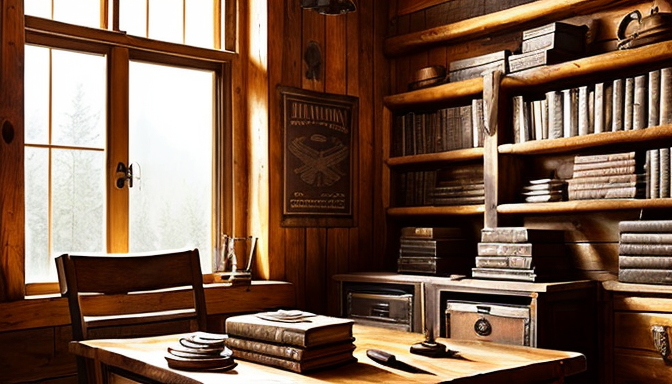When you think of Western films, what comes to mind? Dusty trails, gunfights, and outlaws? But behind every iconic film lies a rich tapestry of literature that has shaped these stories. The Western genre has its roots deeply embedded in classic novels that not only captured the spirit of the frontier but also painted complex portraits of its characters. From the rugged individualism of cowboys to the moral dilemmas faced in lawless lands, these literary works have provided the foundation for countless cinematic tales.
Take, for instance, the groundbreaking novel “The Virginian” by Owen Wister, which introduced the archetype of the cowboy hero. This book not only set the stage for future Westerns but also influenced filmmakers like John Ford and Sergio Leone. The themes of honor, justice, and the struggle against nature resonate through both the pages of the book and the frames of the films adapted from it. It’s fascinating to see how a simple story can evolve into a visual spectacle that captivates audiences for generations.
As we explore the Western frontier through films and books, we uncover a world where adventure meets philosophy. Every shootout and standoff is more than just action; it’s a reflection of the human condition, shaped by the literary giants who penned these tales. So, the next time you settle in for a classic Western, remember that behind every hero and villain lies a story waiting to be told.
The Influence of Classic Novels
When we think of Western films, it’s impossible to ignore the profound influence of classic novels that have shaped the genre. These literary masterpieces not only provide a backdrop for thrilling tales of adventure and survival but also offer rich narratives and complex characters that resonate deeply with audiences. Imagine the dusty trails and rugged landscapes of the American West, brought to life through the pages of books like “The Virginian” by Owen Wister or “True Grit” by Charles Portis. These stories have become the backbone of Western cinema, infusing it with themes of honor, justice, and the struggle against nature.
Classic novels serve as a treasure trove of inspiration for filmmakers. They delve into the psyche of their characters, exploring motivations that often reflect the human condition. For instance, the character of the stoic cowboy, often portrayed in films, finds its roots in the pages of these early works. The struggle for survival, the quest for identity, and the battle against societal norms are all central themes that have transcended time. In fact, many of the films we adore today are adaptations or inspired by these literary giants.
To truly appreciate the connection between literature and film, consider the following:
- Character Development: Classic novels provide depth, allowing characters to evolve in ways that resonate with audiences.
- Thematic Richness: Themes of morality, justice, and redemption are prevalent in both literature and film.
- Cultural Reflection: These stories reflect the values and struggles of their time, making them timeless.
In essence, classic novels are not just stories; they are the very fabric of the Western genre, weaving together the threads of history, culture, and human emotion that continue to captivate us on the silver screen.

Modern Adaptations and Interpretations
The Western genre has undergone a fascinating transformation over the years, evolving from its classic roots to embrace modern themes and narratives. Today’s filmmakers are not just retelling old stories; they are reinterpreting the essence of the Western frontier, blending traditional motifs with contemporary issues that resonate with today’s audiences. This adaptation reflects a broader cultural shift, where the rugged individualism of the cowboy is juxtaposed with modern societal challenges.
Take, for instance, films like “No Country for Old Men” and “The Revenant”. These movies draw heavily from literary sources, yet they infuse them with a gritty realism that captures the complexities of human nature. The characters are not merely heroes or villains; they are multifaceted individuals grappling with moral dilemmas. This depth adds a layer of richness that was often absent in earlier Westerns.
Moreover, the integration of diverse voices has expanded the narrative landscape. Modern adaptations often include perspectives from marginalized communities, providing a more inclusive portrayal of the American West. Films like “The Harder They Fall” showcase Black cowboys, challenging the traditional narrative and highlighting the contributions of these often-overlooked figures.
As we explore this evolution, it becomes clear that the Western genre is not just a relic of the past; it is a living, breathing entity that continues to shape and reflect our collective storytelling. Whether through literature or film, the frontier remains a powerful symbol of adventure, conflict, and the enduring human spirit.
Frequently Asked Questions
- What are some classic novels that inspired Western films?
Many classic novels have served as the backbone for Western films. Titles like The Virginian by Owen Wister and True Grit by Charles Portis are prime examples. These stories introduced unforgettable characters and themes that filmmakers have adapted over the decades.
- How do modern Western films reinterpret literary sources?
Modern Westerns often take the essence of classic literature and twist it with contemporary themes. For instance, films like No Country for Old Men blend traditional Western motifs with modern moral dilemmas, showing how the genre can evolve while still honoring its roots.
- Why are literary origins important in understanding Western films?
Understanding the literary origins helps us appreciate the depth and complexity of Western films. These stories provide context for character motivations and plot developments, making the viewing experience richer and more engaging.